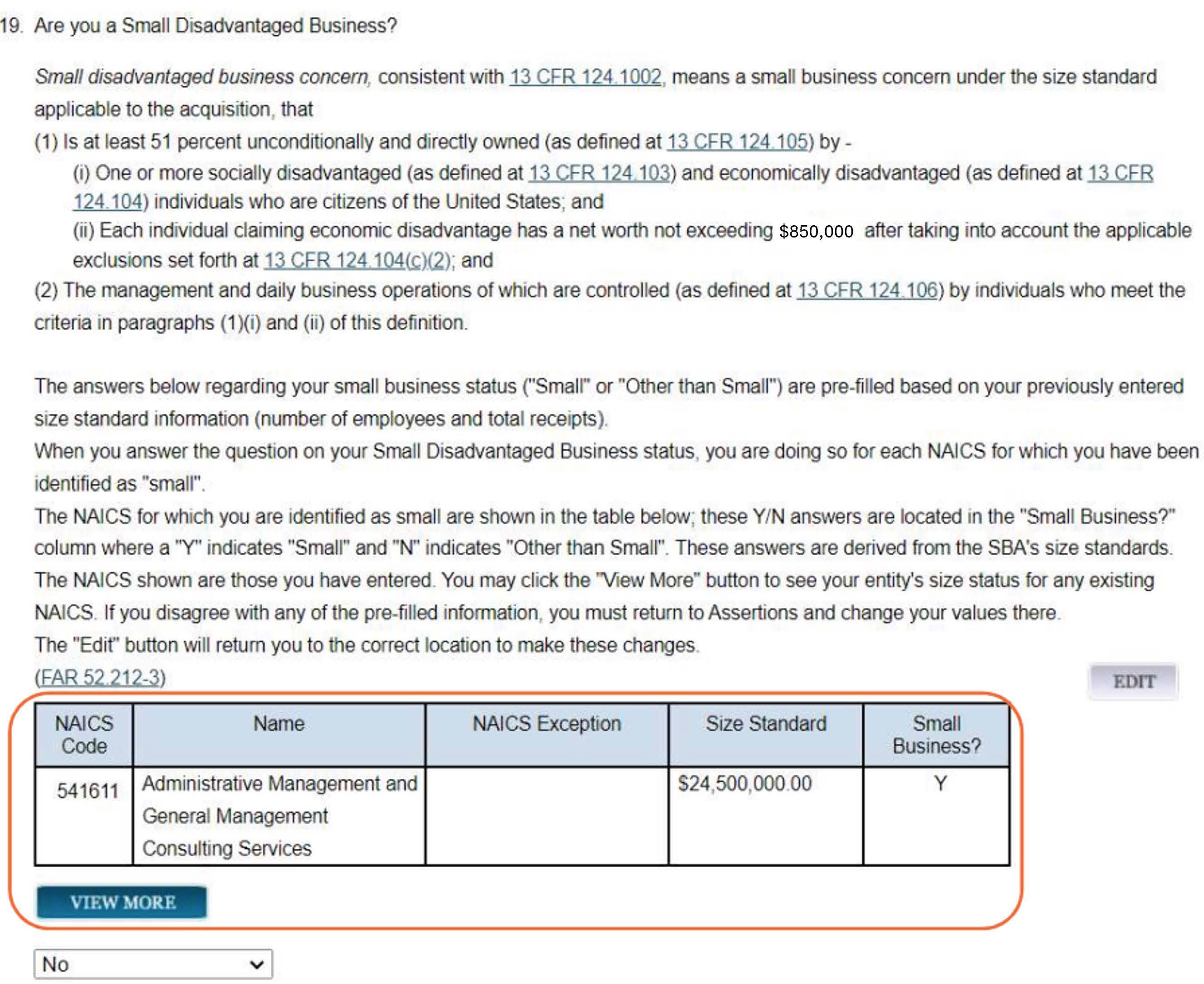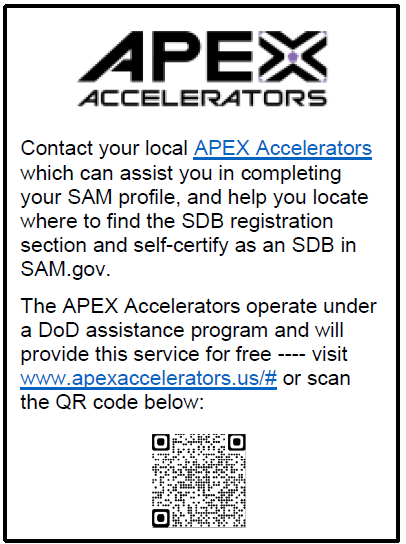Each year, the Federal Government awards about 10% of all federal contract dollars, or roughly $50 billion in contracts, to Small Disadvantaged Businesses (SDB). The Small Business Administration’s (SBA) Office of Government Contracting and Business Development monitors the progress of 24 Executive Branch agencies in contracting with Small Disadvantaged Businesses.
What is a Small Disadvantaged Business?
To qualify as a Small Disadvantaged Business (SDB) , businesses must meet the following eligibility criteria:
• Be a small business according to the SBA’s size standards;
• Be at least 51% or more owned and controlled by one or more disadvantaged persons;
• The disadvantaged person or persons must be socially disadvantaged and economically disadvantaged (Have a personal net worth of $850 thousand or less, adjusted gross income of $400 thousand or less, and assets totaling $6.5 million or less)
13 CFR 124.103(a) establishes that socially disadvantaged individuals are those who have been subjected to racial or ethnic prejudice or cultural bias within American society because of their identities as members of groups and without regard to their individual qualities. The social disadvantage must stem from circumstances beyond their control.
Certification for SDB
If you are an SDB, you should self-certify as part of your registration in the System for Award Management (SAM.gov) . Although you generally will not receive any special preference as an SDB competing for prime contracts, agencies have an interest in supporting SDBs because the federal government's goal to award a certain percentage of all contract dollars to SDBs.
SAM.gov Registration Data - REPS & CERTS Section


What do I need to Register?
Registrations require information about your entity including, but not limited to, your:
• Entity’s legal business name
• Physical address
• Tax identification number (TIN)
• Banking information
• Information about the types of goods and services you provide
o NAICS codes (List of NAICS codes)
o Product and service codes (PSCs) (List of PSCs)
• Entity size (number of employees and worldwide total receipts)
• Entity points of contact
Visit the Get Started page at SAM.gov to view a checklist to help you prepare for registration.
Self-Certify Troubleshooting in SAM
The self-certification for SDB is located in question #19 within the SAM.gov Registration Data under the Representations and Certifications (Reps & Certs) section. If the SDB option in question #19 is not editable or allowing you to change the answer to “Yes,” then you must make sure you have completed the basic SAM registration by filling in the following three areas of data in SAM, for both “global” and “local:”
- All the North American Industry Classification System (NAICS) codes you are presently capable of performing in and designate the primary one which represents the bulk of your business activity (you only need one but may have more);
- Total number of employees (head count, not full-time equivalent) and if there are seasonal variations, use the annual average number; and
- Total revenues from all sources
The system will then compare these three areas of data against the small business size standards and will insert the business size for each industry. This can take a few days and will open up access to edit the SBA Dynamic Small Business Search (DSBS) profile where you can then fill in the capability statement, federal and other references, searchable keywords, etc. Note that any time you go back into SAM to add or delete a NAICS code, employee head count, or revenues, the system will lock out the DSBS while it re-calculates the business size.
The “Are you a Disadvantaged Business” part is derived from question #19 in the Reps & Certs section. The question must be answered “Yes” or “No.” This question can be answered once the business is identified as a small business for each NAICS code.
When the business size has correctly appeared in SAM, you can then go to “update” and scroll down to “validate/update reps & certs” in order to check the box for “Are you a Disadvantaged Business.” You might want to review the standards for disadvantaged status to be sure you are eligible both socially and economically. Checking the “disadvantaged” box constitutes self-certification and should not be misrepresented.
A common reason you cannot get editing access to update the SDB status is that the three elements of data needed for determining size are incomplete, and/or you may not have waited long enough for the system to process the data. Another possible cause is the wrong organizational structure is checked, so go back and be sure it says either proprietor, partnership or corporation, because if it says not-for-profit, it is not a business and thus is not a small business.
Additional Information and Resources
The SBA DSBS is a database that government agencies use to find small business contractors for upcoming contracts. Small businesses can also use DSBS to find other small businesses to work with, and large prime contractors can use the database to find small business subcontractors. The information you provide when you register your business at SAM.gov is used to populate DSBS, so you should create a comprehensive business profile.